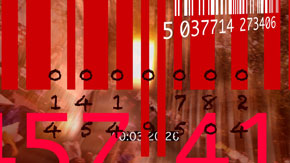


A central component to the video aspect of this piece will be allowing it to be open. It will not attempt to lead the viewer to a conclusion. Instead it will attempt to create psychological cues the trigger reactions as diverse as the viewers, Layered, often opposing images that are representative of my experiences in the year 1999 will be interwoven. These images will in no way try to depict a story rather create a skeletal structure of components for the viewer to “fill in the blanks”, recall their own experiences and come to their own conclusions. The piece will not rely on cognitive dissonance to create a point or intentional reaction by the viewer. The desired outcome is to create a unique experience based on the perception and psychology of the individual viewers. “Cognitive dissonance is central to many forms of persuasion to change beliefs, values, attitudes and behaviors. The tension can be injected suddenly or allowed to build up over time. People can be moved in many small jumps or one large one.” This method, has in the past, proven to be effective in my work. The musical component which acts much in the same manner adds markers which are intended to psychologically trigger recollection, experiences and perception of the individual. The desired outcome is that both Botelho and myself would be able to experience the piece as though it was not our own and draw our own conclusions through the collective and elective subconscious through which it was created. The video aspect will seek to exploit the inherent technological flaws in the medium by deconstructing the medium itself. The piece will be done in opposition of the commercial uses of the medium and explore the intrinsic beauty of the medium by dissecting its properties and stand as a tribute to the medium itself. Various methods of deconstruction will be applied including varying frame rates, aspect ratios, rescanning of video and enormous feedback loops achieved through satellite manipulation. The imagery will be representative of my own recollections and completely open to interpretation by those who watch it. I have been experimenting with interlacing video formats, creating a single unified piece layered in NTSC, PAL and SECAM. The desired effect is to create a single video that will appear differently depending on where in the world it is being viewed. These concepts will be explored in this piece. “From the earliest commentaries on the new medium to debates about digital technology today, theorists have contemplated the essential nature of the film experience. While film is perceptually immersive—almost hallucinatory—in a way that other media are not, the social dimension, that is, the experience of a mass audience consuming a mass entertainment, cannot be ignored.” We seek to delve further into these principals and differ in the sense that a mass audience would not be led to conclusions by a narrative. It would instead seek to invoke the inner thoughts and memories of the viewer creating a unique experience for each viewer. “The method by which movies stimulate mental functioning is of primary concern to recent writers working at the intersection of philosophy and film. Two approaches that have emerged in recent years include cognitivism and phenomenology. David Bordwell, a profound influence on the former approach as well as on contemporary film studies more generally, understands film style as affording particular cues to viewers who then, through cognitive functioning, respond to those cues by assigning meaning and forming impressions.” Our piece will play off these principals only varying in the sense that we are not seeking to have viewers respond to cues in a predetermined way with a desired outcome. The cues in this case are used as almost random suggestions which can be interpreted in as many ways as it has viewers. It shall not be created in a linear fashion delivering you to a pre packaged conclusion. “Mental imagery is thought to share properties with perception. To what extent does the process of imagining a scene share neural circuits and computational mechanisms with actually perceiving the same scene?” - 2009 Elsevier B.V. The aforementioned principles are concepts which I will attempt to explore in this piece. By design and as always Mr. Botelho and myself will have no knowledge of one another’s component. We will create 2 completely separate and independent pieces of a predetermined duration. There will be no discussion between us of the piece to assure that we will not accidentally feed off of each other’s ideas and keep the pieces purely separate entities. The two independent pieces will then be combined to create a unique piece of an unknown outcome.
(back to century timeline)
